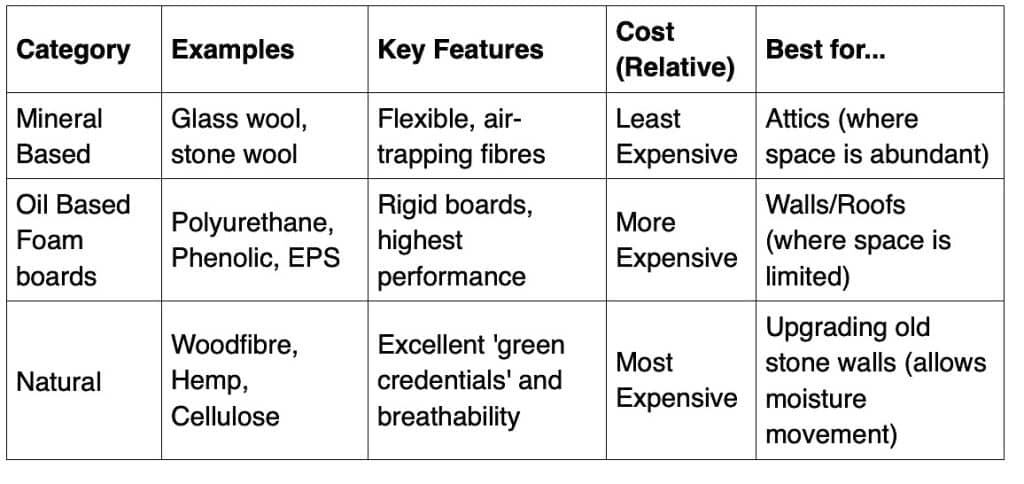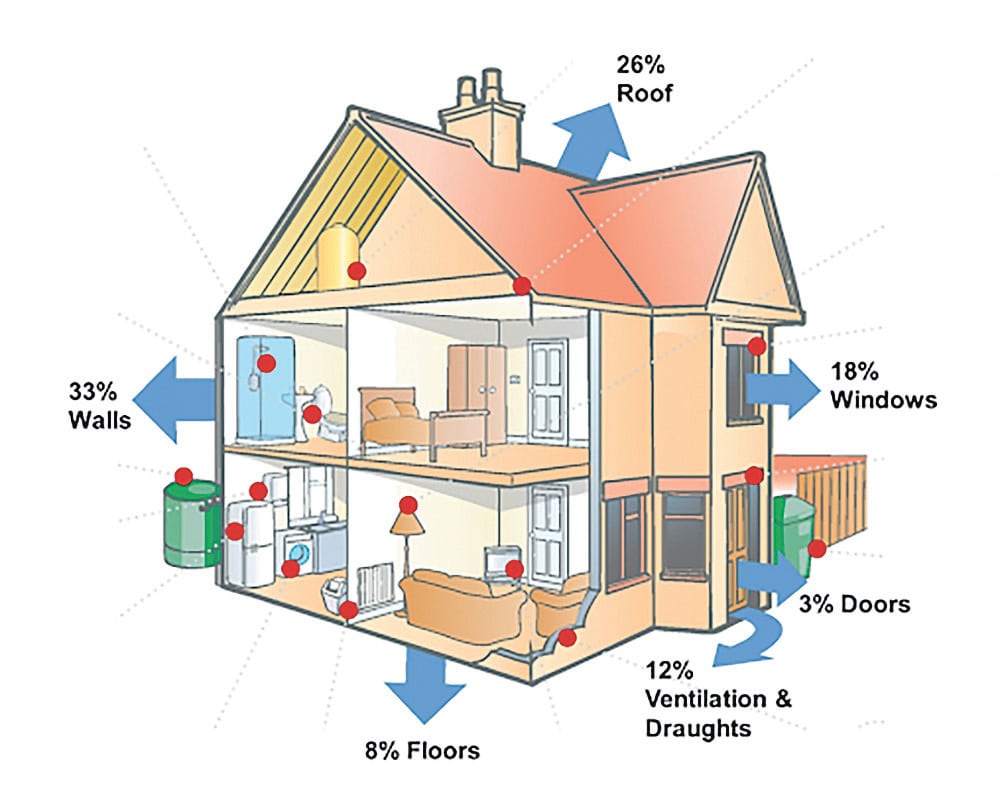As winter arrives and energy bills climb, your home’s heat is literally escaping. But keeping your house warm this season doesn’t have to be expensive or difficult. This article breaks down the easiest, most cost-effective insulation upgrades you can make—starting with a look at the materials themselves.
Understanding insulation materials
When choosing insulation, there are several things to consider, including cost, performance, suitability for the application, and environmental impact. Insulation materials fall into three broad categories, as shown in the table.

Your quickest win is attic insulation
The single easiest and most cost-effective insulation upgrade you can make is in your attic. I’m always surprised by how many homes still have only 100mm of old glass wool between the joists.
Upgrading this to a deep 300-400mm will reduce heat loss by almost fourfold! It’s a relatively straightforward DIY job, though a little unpleasant, or a quick morning’s work for a contractor.

DIY tips for attic insulation
• Don’t compress it: It’s the air trapped between the fibres that provides the main insulation value. If you store items in the attic, they will need to be placed on a raised deck.
• Ventilation is key: Most older attic spaces need to be ventilated (usually via vents at the eaves or tile vents) to remove any moist air and prevent condensation.
• Grants: There is an SEAI grant of €1,500 (for a detached house) available towards the work if you use a registered contractor.
Upgrading your walls:
Cavities vs. solid
A large proportion of your heat loss occurs through the walls.If you are fortunate enough to have cavity walls, they can usually be easily upgraded. Once a contractor confirms suitability, polystyrene bead insulation is simply pumped in through a series of holes drilled into the outside of the walls. This is another easy win that can likely be completed before Christmas and there is also an SEAI grant of €1,700 towards this upgrade for a detached house!
Older properties (typically pre-1930s, but sometimes up to the 1960s) are likely to have solid, hollow block, or stone construction. These require more advanced insulation solutions, such as external or internal wall insulation, which we will come back to in a future article.
Windows and doors:
The glazing choice
Poor-performing windows and doors are a major source of heat loss, particularly if they allow cold air to leak in. Replacing old windows completely is a big and expensive job, but there are huge benefits to changing single or old double glazing (20-plus years).
Modern triple glazed windows are about four times as effective at keeping the heat in as double glazing from the late 90s. I tell all my clients that for an increase in cost of only about 15pc, modern triple glazing is 60 per cent more effective at retaining heat than modern double glazing. It’s a huge performance leap for a small price difference.
There are some interim solutions for existing windows if you can’t stretch to a full replacement:
• Draught-proofing: A simple measure to immediately reduce air leakage.
• Professional service: Get an expert to adjust the hinges and locks so the windows close correctly.
• Slimline glazing: With some older wooden frames, it may be possible to change the glass. Slimline glazing will improve performance but will not compete with the heat retention of a full triple-glazed replacement.
The last step: Air leakage and draught-proofing
Unwanted heat loss via air leakage occurs all around the home.
You can do a lot of this yourself with a can of expanding foam and a roll of draught excluder. Typical locations for air leakage include: around attic hatches, windows, and doors. Penetrations where plumbing and electrics come through walls are also problem spots.
Open chimneys create a huge draught, not to mention their inefficiency when burning fuel. Think about fitting a stove instead or blocking it up completely. You can also use something like a chimney balloon or even an old pillow as a temporary, removable seal.
If you would like to get in touch about anything in this article or your own retrofit project, feel free to reach out; ruairi@retrofurb.ie.



